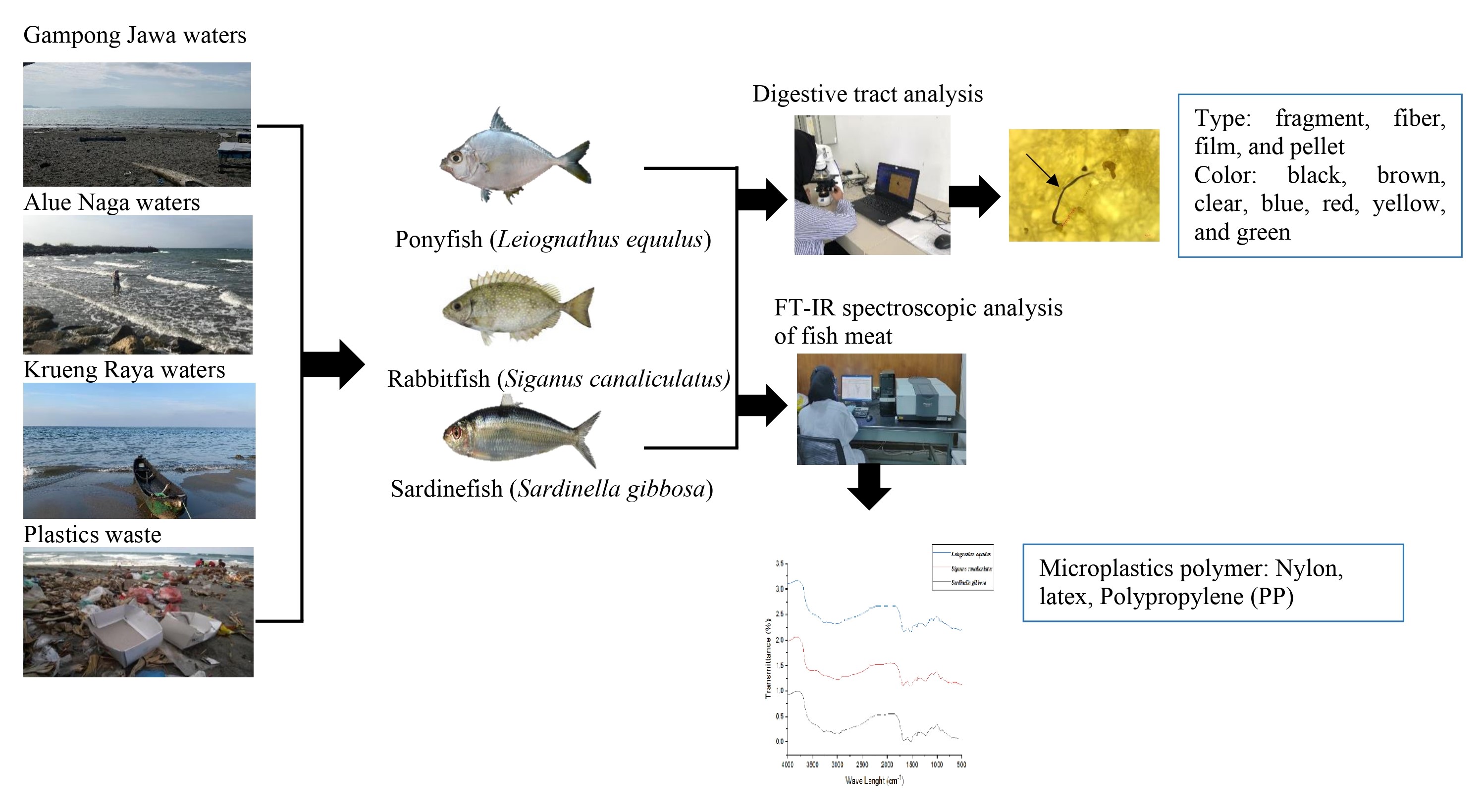
Banda Aceh City and Aceh Besar Regency are two of the areas experiencing rapid population growth and increased waste production, including plastics. The areas are directly adjacent to the coast, and the generated plastic waste has the potential to pollute the sea and fish. Therefore, this research aimed to analyze microplastics contamination in three species of marine fish caught in the coastal areas of Banda Aceh and Aceh Besar. The sampling was carried out for 3 months from January to March 2024 at three locations, namely Gampong Jawa (Station 1), Alue Naga (Station 2), and Krueng Raya (Station 3). The fish samples were ponyfish (Leiognathus equulus), rabbitfish (Siganus canaliculatus), and sardine fish (Sardinella gibbosa). The results showed that there were four forms of microplastics, namely fibers, fragments, films, and pellets, with seven types of colors, including black, brown, clear, blue, red, yellow, and green. The dominant shape and color were fragment and black, respectively. In ponyfish, the highest and lowest number of microplastic particles were found in samples caught in Alue Naga waters (4.51 particles/fish) and Krueng Raya waters (2.80 particles/fish). Meanwhile, rabbitfish had the highest and lowest abundance in Alue Naga waters (3.60 particles/fish) and Gampong Jawa waters (2.83 particles/fish), respectively. The highest and lowest abundance of sardine fish was found in Gampong Jawa waters (3.77 particles/fish) and Krueng Raya waters (1.50 particles/fish), respectively. In general, ponny fish had a higher abundance of microplastics than the other two species, and microplastics were highest in fish from the Alue Naga station based on location. According to Fourier Transform Infrared Spectroscopy (FTIR) test on flesh samples of the species, three types of polymers were detected, namely latex, nylon, and polypropylene. In this context, the flesh of species analyzed were contaminated with microplastics.
Total file downloads: 40